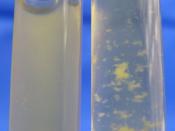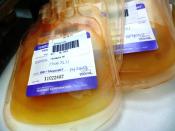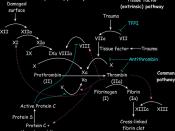Disease States Involving Disturbances of Haemostasis.
Normal Human Haemostatic Mechanisms
Haemostasis is the control of blood loss from the circulation, involving a number of separate events including coagulation.
The process is as follows:
1. Vasoconstriction (Vasospasm).
When the initial injury occurs to a blood vessel, it constricts with enough intensity to close the vessel. It occurs as the result of 2 separate mechanisms:
a) local reflexes of the nervous system.
b) biochemical- serotonin and epinephrine are released by aggregated platelets causing vasoconstriction.
Histamine is released subsequent to tissue damage by mast cells in the inflammation process and has a vasodilator effect.
TXA2 also produces vasoconstriction as mentioned later.
2. Sticking of the Endothelial Surfaces.
When vasoconstriction occurs, the exposed endothelial surfaces of the blood vessels adhere keeping the blood vessel closed. Adhesiveness of the damaged membranes is facilitated by the altered surface properties of the injured blood vessel.
3. Formation of a Platelet Plug.
Platelets are cytoplasmic fragments which are released into the circulation by megakaryocytes formed in the bone marrow. (The usual survival time of platelets is 10 days.) Platelets stick to exposed subendothelial surfaces of blood vessel walls.
The platelet receptor binds to the von Willebrand Factor (a plasma protein) which bridges the platelet to the injury site. They then degranulate ie. release the contents of their granules. Their are 2 types of granules in their cytoplasm: alpha granules containing clotting factors and a growth factor, and dense granules containing ADP, ATP, Ca2+, and serotonin.
Erythrocyte involvement - erythrocytes increase the rate of platelet adherence by facilitating migration of platelets toward vascular surfaces and by releasing ADP (adenodiphosphate- a by-product of the Krebs Cycle) which enables platelets to adhere to exposed collagen - platelet aggregation. This process would not stop if the effects of ADP were not counteracted.


